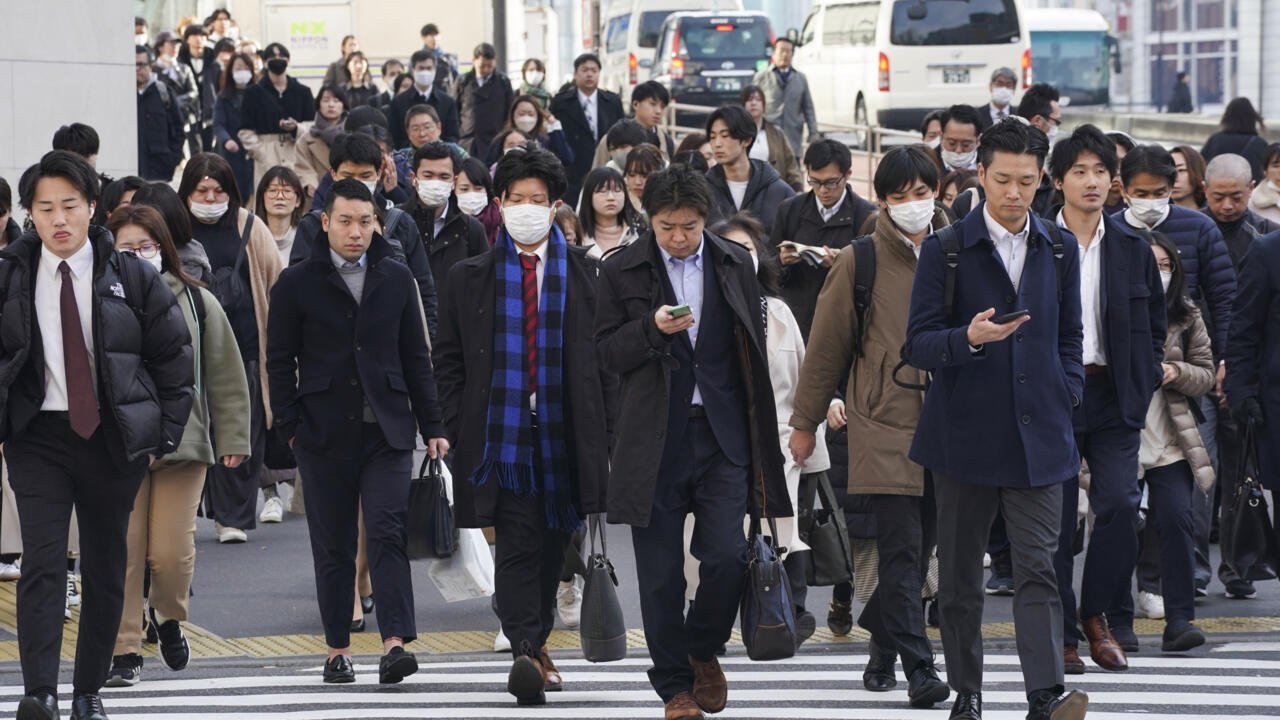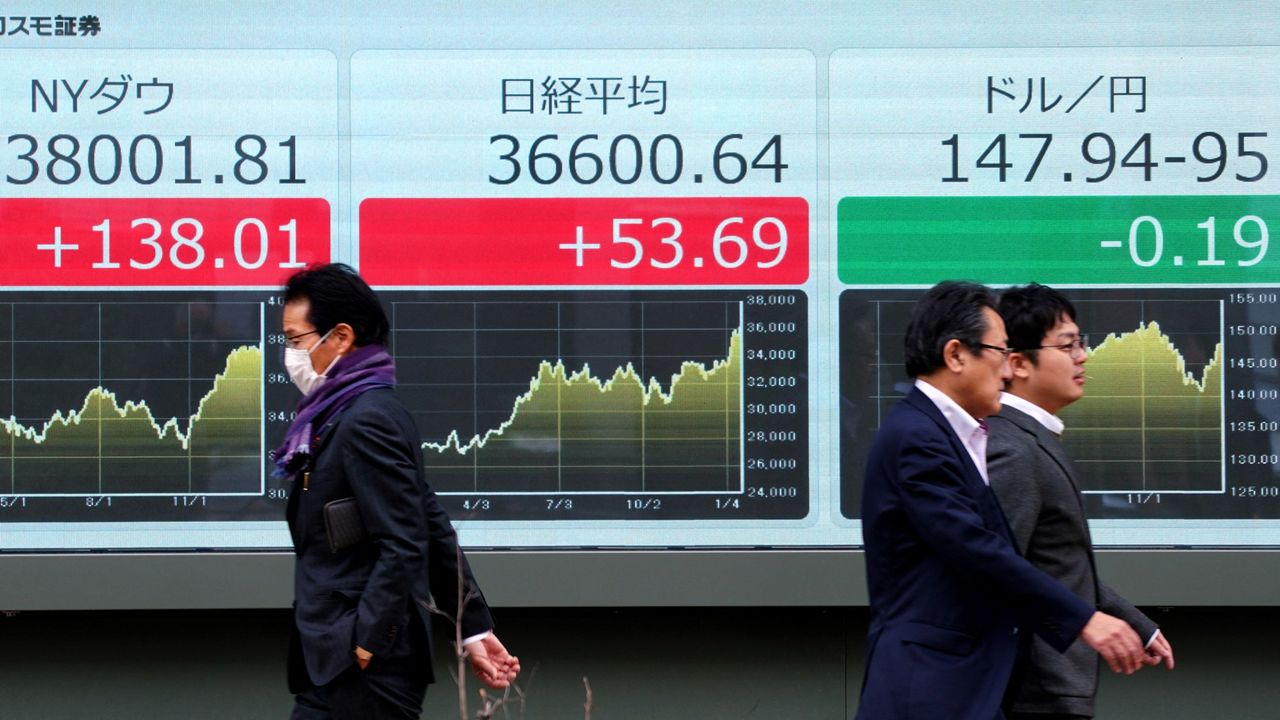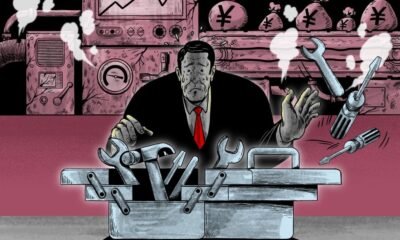Economy
From Boom To Bust. Japan’s Economy Struggles With 16-Month High Inflation And 10-Month Low Factory Activity Amid Global Uncertainty And Trump-Era Policy Impacts
Published
9 months agoon

Japan’s economy is faltering as core inflation surged to a 16-month high of 3% in December, year-on-year, intensifying pressure on the Bank of Japan (BOJ) to reconsider its monetary policy stance. The rise aligns with expectations from economists and surpasses November’s 2.7% price growth, marking a persistent challenge for the world’s third-largest economy.
The latest inflation data shows a trend that has seen core inflation remain at or above the BOJ’s 2% target for an unprecedented 33 consecutive months. Core inflation, which excludes fresh food but includes energy prices, reflects deeper structural price pressures within the economy. Meanwhile, the headline inflation rate accelerated to 3.6% in December from 2.9% in November, the highest level since January 2023.
Policy Implications for the BOJ
The timing of this data is critical, coinciding with the BOJ’s policy meeting, which concludes today. Market analysts widely expect the central bank to raise its key policy rate by 25 basis points, bringing it to 0.5% — a level not seen since 2008. This anticipated hike comes amid public statements by Governor Kazuo Ueda and senior BOJ officials signaling a readiness to tighten monetary policy if economic conditions continue to improve.
Governor Ueda’s comments on January 16 emphasized that the BOJ would act if improvements in the economy and prices persist. Analysts point to robust domestic wage momentum and sustained price pressures as key factors justifying a rate hike. The BOJ’s observation that wage increases are spreading across firms of all sizes and sectors further strengthens the case for policy tightening.
Manufacturing Struggles While Services Anchor Growth
While inflation rises, Japan’s factory activity is sinking to concerning lows. The au Jibun Bank flash manufacturing purchasing managers’ index (PMI) fell to 48.8 in January, down from 49.6 in December. This marks the lowest level in 10 months and the seventh consecutive month below the critical 50.0 threshold that separates expansion from contraction.
Manufacturing output dropped at the steepest pace since April, with new orders falling at their slowest rate in six months. December trade data revealed a 3% decline in exports to China and a 2.1% drop to the United States, Japan’s two largest trading partners, aggravating the sector’s struggles. Sluggish domestic and international demand continues to weigh heavily on the manufacturing sector.
In contrast, the service sector showed resilience, providing crucial support to the economy. Preliminary business surveys for January indicated further strengthening in the services sector, helping anchor growth amid the manufacturing slump.
The manufacturing sector’s input inflation eased slightly in January, leaving output prices unchanged from the previous month. Stocks of finished goods rose for the first time since last July, reflecting anticipation of an eventual recovery in demand.
The au Jibun Bank flash services PMI climbed to 52.7 in January from 50.9 in December, driven by an uptick in new business activity. While average input costs soared to their highest rate since last August, new export businesses expanded for the first time since September. Despite these changes, price-charged inflation and overall business sentiment remained largely steady.
The au Jibun Bank flash Japan composite PMI, which combines manufacturing and service sector activity, edged up to 51.1 in January from 50.5 in December.

Trump’s Tariffs Add To The Strain
Japan’s government maintained a cautious outlook for the economy on Thursday, noting the need to monitor U.S. President Donald Trump’s policies and their potential impact on global growth. Policymakers also cited financial market fluctuations as another critical factor to watch. The government’s January report reaffirmed its view that the economy is recovering moderately, supported by steady wage growth and a robust corporate sector.
“Executive orders on policies such as immigration and energy, which could influence both U.S. and global economies, are being issued in the U.S.,” an official at the Cabinet Office stated.
Trump’s threats of tariffs against key trading partners have fueled uncertainty for investors and policymakers, causing volatility in global markets since his sweeping November 5 election. Many Japanese firms operating in the U.S. are bracing for potential fallout from these policies, according to a survey released last week.
The Cabinet Office report noted that Japan’s investment in the U.S. has been rising, holding the top spot for five consecutive years since 2019. Japanese companies have also significantly contributed to job creation in the U.S., particularly in the manufacturing sector.
In its January report, the government maintained its assessment of key economic areas. Private consumption, which accounts for more than half of Japan’s economy, was described as “picking up,” while corporate profits were “recovering overall.” The government expects gradual economic recovery to continue, strengthened by improvements in employment and wage conditions.
Japan’s November base salary, or regular pay, rose at the fastest pace since 1992, following agreements by major companies for higher wages during spring negotiations. The nation’s largest business lobby, Keidanren, and trade unions began this year’s wage talks on Wednesday, with policymakers closely watching whether the momentum spreads to smaller firms.
This monthly report precedes the Bank of Japan’s monetary policy decision at the conclusion of its January 23-24 meeting. The central bank is expected to raise interest rates barring any significant market disruptions triggered by Trump’s policies, while maintaining its commitment to gradually increase borrowing costs as the economy continues to recover.

From Boom to Bust. Japan’s Faltering Economy
Japan, the fourth-largest economy in the world and a leader in electronic innovation, has been facing economic stagnation for the past two decades. While much of the world battles inflation, Japan finds itself in a peculiar predicament—trying desperately to escape a deflationary cycle that has persisted since the early 1990s.
This struggle stands in sharp contrast to the economic miracle Japan experienced between 1960 and 1989. During this period, Japan’s GDP grew by an astonishing 500%, with the nation pioneering advancements in bullet trains, robotics, and next-generation electronics. By the 1980s, there was serious speculation that Japan might soon overtake the United States as the world’s largest economy.
The Burst of the Bubble Economy
Japan’s remarkable rise culminated in the late 1980s, fueled by an asset price bubble. Property and stock market values soared to unsustainable levels, with speculation driving prices far beyond their intrinsic worth. By the early 1990s, the bubble burst, marking the start of what would come to be known as the Lost Decade.
Banks, which had extended excessive loans during the boom years, faced mounting bad debts. Corporate bankruptcies surged, and consumer spending plummeted. The government’s response, characterized by stimulus packages and low interest rates, failed to reignite growth. Instead, these measures entrenched a deflationary mindset, where consumers and businesses delayed spending in anticipation of falling prices.
The 2000s. A Glimmer of Hope
Entering the 2000s, Japan sought to revive its economy through structural reforms under Prime Minister Junichiro Koizumi. These included privatizing key sectors, such as postal services, and addressing the banking crisis. While these efforts temporarily stabilized the economy, Japan’s growth remained sluggish compared to its global counterparts.
The global financial crisis of 2008 further compounded Japan’s woes. Exports, a cornerstone of its economy, were severely impacted as demand from key markets like the United States and Europe shrank. Despite Japan’s resilience in sectors like automotive and electronics, its over-reliance on exports exposed vulnerabilities.
The 2010s. Abenomics and Its Challenges
In 2012, Prime Minister Shinzo Abe introduced a bold economic strategy, dubbed Abenomics, aimed at breaking the deflationary cycle. This approach rested on three pillars: monetary easing, fiscal stimulus, and structural reforms. The Bank of Japan adopted aggressive measures, including negative interest rates and large-scale asset purchases, to spur inflation and economic growth.
While Abenomics initially boosted investor confidence and weakened the yen to support exports, its long-term impact was mixed. Wage growth remained stagnant, and the benefits of monetary easing failed to trickle down to the average citizen. Japan’s aging population and declining birth rates further exacerbated the economic slowdown, with fewer workers supporting a growing elderly demographic.
Today. Why Is Japan Faltering?
As of today, Japan’s economy continues to struggle with several structural issues –
- Demographic Decline: Japan’s population is aging faster than any other major economy. By 2050, nearly 40% of its citizens are projected to be over 65, straining public finances and reducing workforce productivity.
- Stagnant Wages: Despite economic stimulus measures, wage growth has remained negligible. This has eroded consumer spending, further entrenching the deflationary cycle.
- Global Competition: While Japan was once synonymous with innovation, countries like South Korea and China have rapidly caught up, particularly in technology and manufacturing.
- Dependence on Exports: Japan’s heavy reliance on exports makes it vulnerable to global economic shocks, as evidenced during the COVID-19 pandemic and the ongoing geopolitical tensions affecting supply chains.
- Policy Limitations: Despite decades of monetary easing, inflation remains elusive. The Bank of Japan faces limited room for maneuver, as interest rates are already near zero or negative.
The Last Bit
Japan’s current economic picture presents a paradox – while inflationary pressures and wage growth signal recovery, the manufacturing sector’s downturn reflects underlying vulnerabilities. The yen’s marginal weakening to 156.1 against the dollar following the inflation data release adds another layer of complexity to the BOJ’s policy considerations.
The BOJ’s expected rate hike would mark a significant policy shift, signaling its commitment to reining in inflation while balancing growth concerns. However, the global economic backdrop, shaped by subdued demand and geopolitical uncertainties, poses additional risks.
Japan’s economy remains precarious, requiring a delicate balancing act to manage the twin challenges of inflation and declining industrial activity.
You may like
-


Taiwan’s ‘Historic’ TSMC Deal, A Win Or The End Of Its ‘Silicon Shield’ As China Threatens? A Jittery Taiwan Watches Trump’s Moves On Ukraine, Wondering, Could We Be Next?
-


America And China’s Thirst For Gold In 2025 Is Draining Other Countries’ Reserves; Here’s Why?
-


China To Cut Inflation Outlook To 20-Year Low, Eyes Fresh Stimulus At ‘Two Sessions’ To Boost Economy
-


Trump’s Latest Tariff Move on Mexico and Canada. Import Taxes Back on Track Hinting At A Full Blown Trade War!
-


Germany’s Friedrich Merz’s Big Balancing Act—Trump, Borders & Europe’s Future. Can He Deliver?
-


United Kingdom To Unleash Its ‘Harshest’ Sanctions On Russia Yet—But Will They Bite? How Trouble Is Brewing For Keir Starmer At Home. Shamed For Volunteering British Troops In Ukraine
